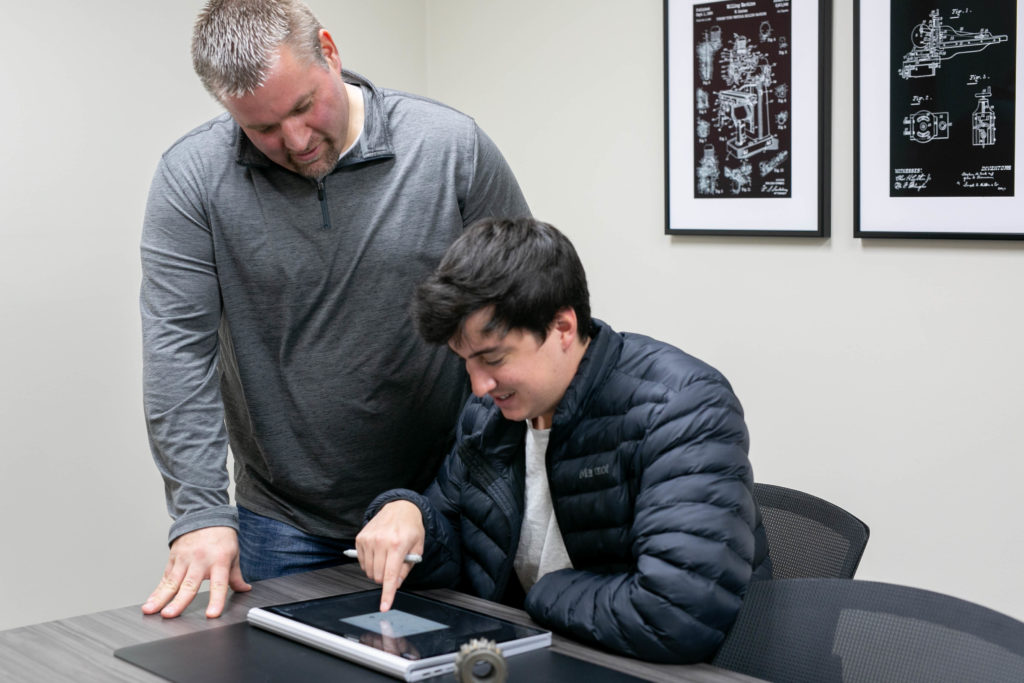The Discovery Process: Collaborating for Success
All contract manufacturing projects begin with a conversation between a buyer and a potential supplier. Making that conversation as effective as possible can mean the difference between failure and success, or mediocrity and excellence. And that’s where the discovery process comes in – it lays the foundation for the work ahead.
As a matter of fact, it’s an awful lot like building a house. You’d never construct a home unless you already had a solid foundation in place, would you? Discovery serves exactly the same purpose in contract manufacturing. But instead of being made from concrete and other materials, this foundation is built with a conversation (or a series of conversations).
The most important discussion you’ll have
The most productive discovery conversations are the ones that ask specific questions and produce detailed answers. When you can articulate exactly what you want and need – and when your supplier clearly understands what you’re looking for, you empower each other to work better together. And that leads to great results.
Your supplier should start your discovery conversation by asking about your design constraints. Any time somebody needs something manufactured, there are always constraints to keep in mind. Identifying and acknowledging them helps you stay focused and ensure a smooth manufacturing process. Let’s say you want your supplier to build you a car that’s 15 feet wide. That car might be the most beautiful thing ever created, but the minute you start discussing design constraints, it’s obvious that the roads simply aren’t big enough to accommodate cars that wide. Your car must be designed and produced within the current constraints of the setting in which it will be used.

Your discovery conversation should also involve asking and answering questions about functional characteristics and requirements. This is where we pose and answer the big question, “What does your product actually need to do?” For example, does it need to rotate? Interact with other parts? Transmit motion? Carry a load? Maybe it needs to do some or all of these things, as well as others. The point is that before your supplier sits down to design and build, you need to know precisely what the end product is supposed to accomplish.
Identifying your design constraints and your functional characteristics and requirements will drive the selections of the materials that will be used to build your product. As you can see, everything rests on the foundation that you and your supplier build during discovery.
Avoid discovery at your peril
It can be tempting to skip all of the pre-work, questions, and follow-up questions in order to jump straight into design and production. But that can be a costly and disastrous mistake, in terms of time, money, and effort. Suppose you just hand your supplier a drawing of what you want. You don’t indicate any tolerances and neither of you engages in a discovery conversation. Your supplier is going to give you a quote based simply on your drawing and nothing else.
For the purposes of this example, let’s assume you approve the quote and production begins. You receive the finished product and realize that you actually needed a tolerance of one thousandth of an inch for a critical safety feature. Because the supplier didn’t ask you about this, and because there was no clear communication about a critical feature, your brand-new product doesn’t do what you need it to do. You’ve lost time and money, and now you’re back to square one. By the time you and your supplier sit down to determine exactly what you need, your project could end up costing more than the original quote by a factor of five or even 10.
A thorough discovery process helps you avoid this nightmare situation. Depending on the supplier, the discovery process might be as formal as a printed questionnaire or a guided discussion that you complete together – or it could be a more organic conversation and note-taking session. However you approach it, the result is the same: a strong foundation and a clear plan forward.
But what if, during discovery, your supplier poses a question that you can’t address or answer? This is a great example of why the discovery process is so important. You now have a valuable opportunity to go back to the appropriate people in your organization and get the information you need to ensure a successful outcome. In doing so, you strengthen the collaboration and partnership between you and your supplier. You also become more knowledgeable about the project and better able to express and clarify your needs. In addition, you become more confident in the purchase you’re making because everyone involved in the process understands what you’re asking for and is armed with the information they need to deliver. And this, in turn, sets the stage for future successes.
Ready to experience this with your next contract manufacturing project? Then contact us at info@cstprecision.com or 864-879-8165. We’d love to work with you, from concept to prototype, print to part, prototype to production, and production to supply chain fulfillment!
